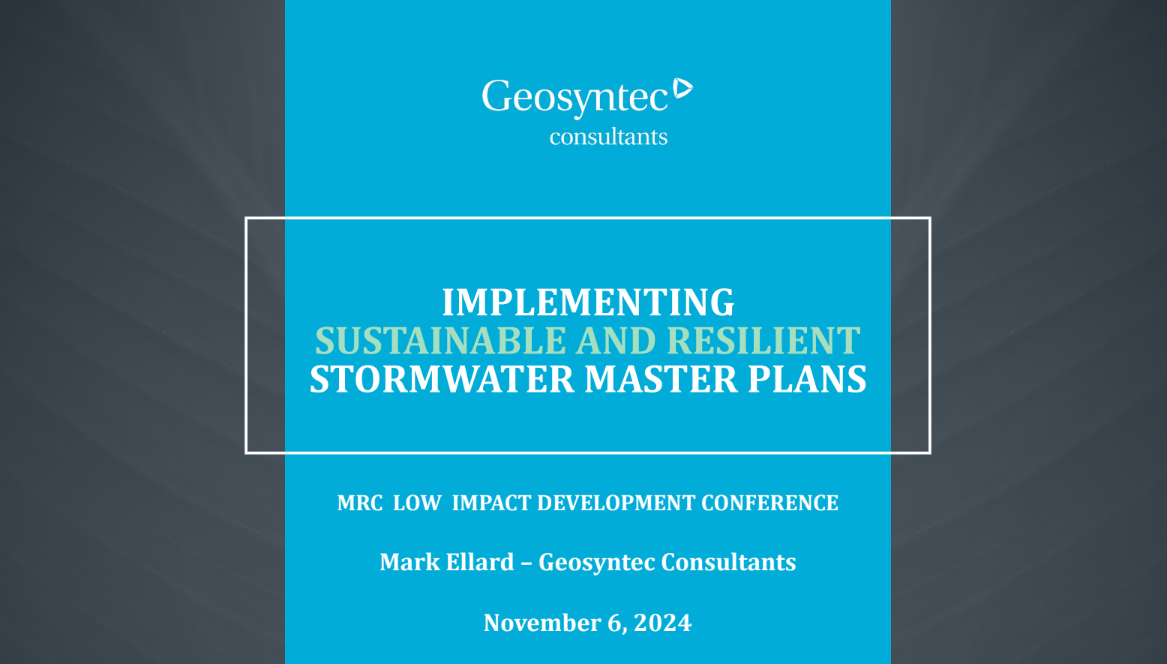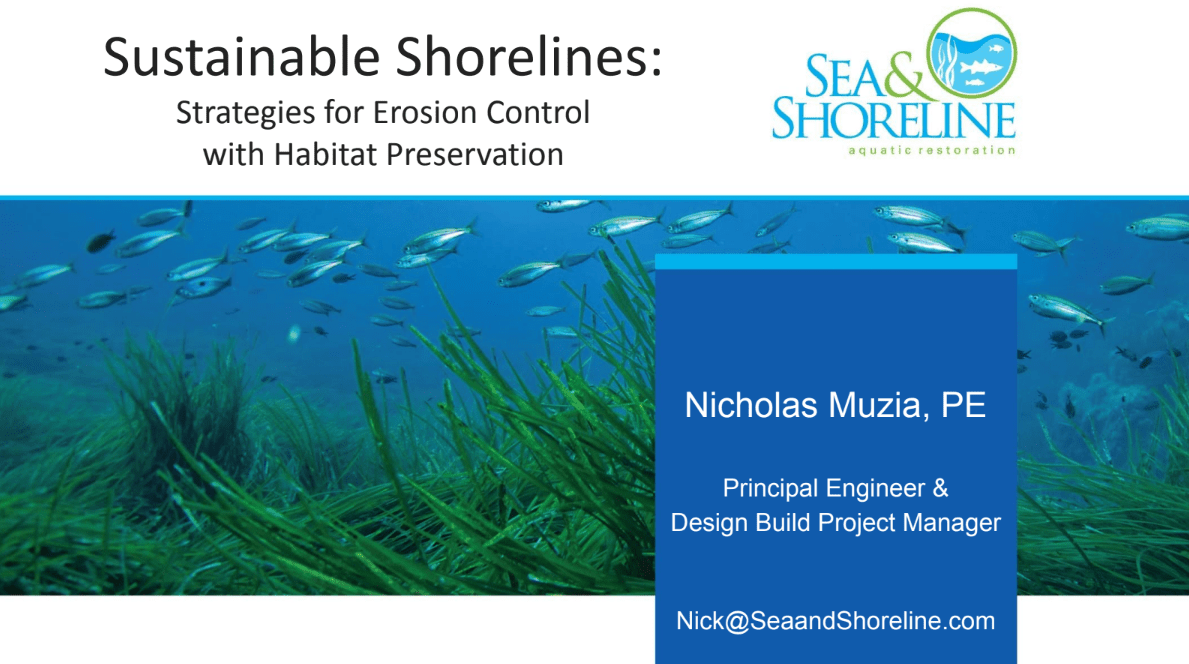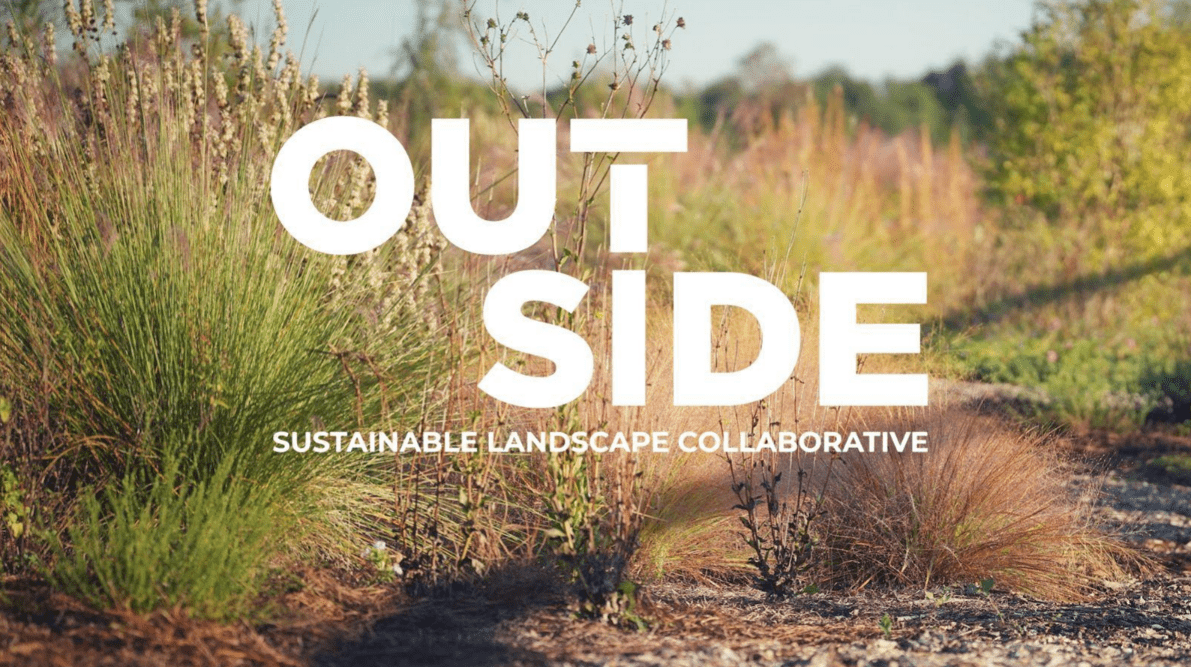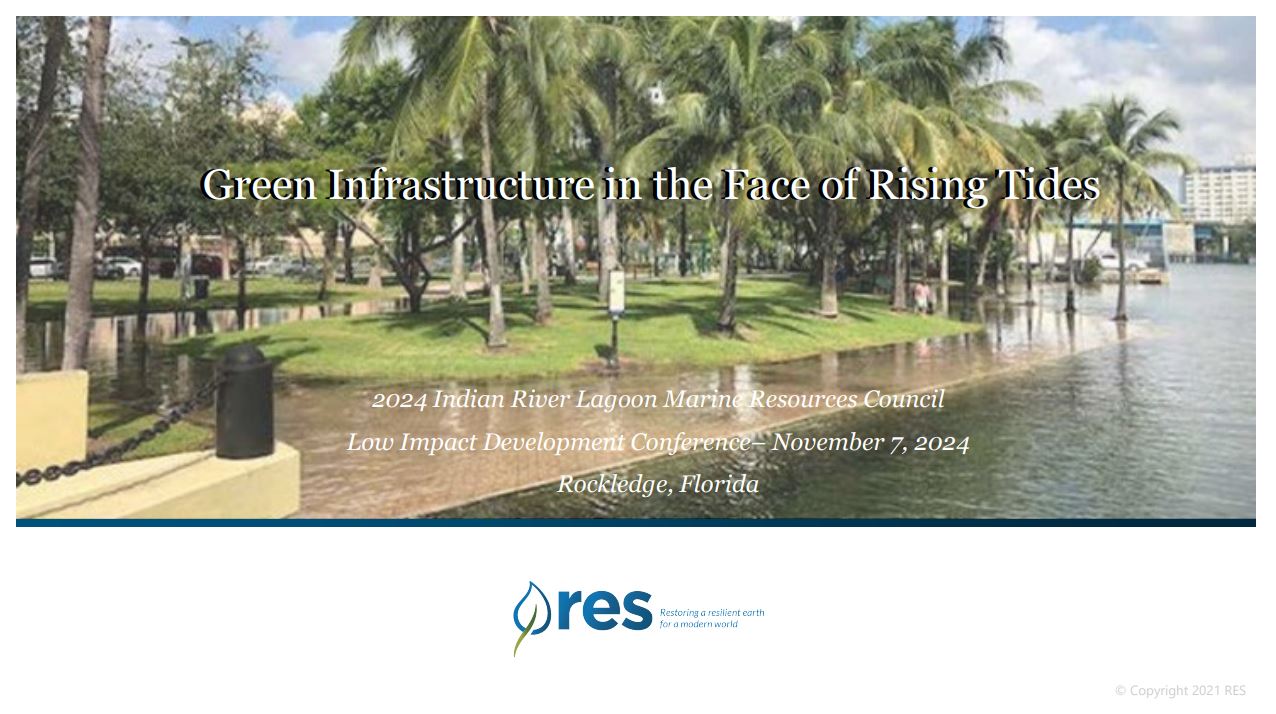2024 MRC Low Impact Development Conference
FOCUSED ON SHORELINE AND FLOODING RESILIENCY,
FLORIDA’S NEW STORMWATER RULE,
AND FUNDING FOR MUNICIPALITIES.
Low Impact Development
+
Green Stormwater Infrastructure
=
Return on Investment
The MRC 2024 Low Impact Development (LID) Conference will took place November 6–7, 2024, and gathered experts, professionals, and stakeholders from around the area. The conference was focused on shoreline and flooding resiliency, Florida’s new stormwater rule, and funding for municipalities. The conference provided professional engineers with seven hours of continuing education credits.
2024 MRC LID Conference Resources
Click the Download button for a PDF of the presentation slides.The Impact of Climate Change on Local Weather Patterns and Precipitation
Dr. Steven M. Lazarus, Professor
Department of Ocean Engineering and Marine Sciences, Florida Institute of Technology
A brief overview of Florida’s climate challenges, local historical precipitation trends and how climate change might impact future rainfall in East Central Florida.


Achieving Resiliency Through Sustainable Green Infrastructure Best Management Practices
Raul M. Mercado, PE, CFM
Water Resources Management Associates, Inc. (WRMA)
To address new challenges, the Town of Lake Park has embarked in the update of the Stormwater Masterplan (SWMP) applying state-of-the-art planning approaches including Green Stormwater Infrastructure (GSI) Best Management Practices (BMP’s) for stormwater management and climate change abatement town wide. The incorporation of a Vulnerability Assessment (VA) in the stormwater master planning process has significantly facilitated the Town’s ability to secure state and federal grants for Capital Improvement Project (CIP) implementation.
Benefits of Blue and Green Corridors for Climate Resilience
Diane Quigley, AICP, CFM
Streamline Technologies, Inc.
This presentation highlights Stantec’s design of a Blue and Green Corridor, which aims to reduce flood risk, slow land subsidence, and encourage neighborhood revitalization. It also focuses on the benefit-cost analysis conducted to capture and quantify the benefits of the blue and green improvements and demonstrate how they exceed the costs of the project. This analysis captures the project benefits in the form of flood reductions, healthier lifestyles, and improved economic activity.


Green and Blue Streets Increase Urban Resilience
Aida M. Curtis
Curtis + Rogers Design Studio
The process of redeveloping the public right-of-way to increase the city of Miami’s resiliency in our rapidly changing climate using green and blue strategies to reinvent the city’s streetscapes to reduce heat, increase the city’s stormwater efficiency, and foster greater habitability.
Environmental Resource Permit (ERP) Statewide Stormwater Rulemaking
David Miracle, PE
St. Johns River Water Management District
An overview of the statewide stormwater rule including the new nutrient removal standards, O&M requirements, and applicable grandfathering provisions.


Implementing Sustainable and Resilient Stormwater Master Plans
Mark Ellard, PE
Geosyntech Consultants, Inc.
A more holistic approach to stormwater master planning involves meeting needs while maximizing collaboration opportunities throughout the community, which will help establish a more effective master plan that meets community sustainability goals. This holistic roadmap should reflect not only the specific improvement solutions but also actual effective and realistic field solutions and the appropriate combination of funding options to make them happen. This presentation covers various approaches and ideas to meet these goals.
Funding Strategies for Stormwater Projects
Lee Hale
Hale Innovation
This presentation covers the primary stages of stormwater project funding; planning, phasing, and executing.


Example Use of Green Stormwater Infrastructures
Dr. Dingbao Wang & Dr. Marty Wanielista
University of Central Florida
This presentation focuses on some Green Stormwater Infrastructure (GSI) options added to wet detention to remove additional Nitrogen (N) and Phosphorus (P) before discharge to the IRL. A software package called BMPTrains is used to confirm annual removal of N and P using GSI and traditional stormwater Best Management Practices (BMPs).
Sustainable Shorelines: Strategies for Erosion Control and Habitat Preservation
Nicholas Muzia, PE
Sea & Shoreline, LLC
As nature faces increasing challenges from storms and urban development, the health of our lakes and coastal waters has never been more critical. This presentation explores innovative and sustainable strategies for erosion control that enhance and preserve vital habitats through the principles of low-impact development (LID) and green infrastructure.


Shifting the Landscape Paradigm for Florida Communities
Tim Sallin
Cherrylake, IMG Citrus
Greg Bryla
Dix.Hite & Partners
Learn how an alternative ecological landscape approach is being implemented at scale within the Sunbridge master planned community development in Osceola and Orange counties, and explore how community landscape design can connect ecologically and cohesively to the residential lot landscape and to the broader regional landscape through stormwater strategy and low impact development.
The City of Cape Canaveral’s “Smart” Rain Garden at Veterans Memorial Park
Dr. Jason Evans
Institute for Water and Environmental Resilience
Zachary Eichholz & Tim Carlisle
City of Cape Canaveral
In late 2023, the City of Cape Canaveral secured a $1 million NSF grant to construct and scientifically monitor a “smart rain garden.” Construction of the rain garden was completed in April 2024, and the rain garden has already performed quite well during two extreme “rain burst” events that caused widespread street flooding in other nearby locations. The rain garden has also become a popular community amenity due to its beautiful setting within a newly refurbished park. This “smart” rain garden may be a good model for other municipalities in the Indian River Lagoon watershed looking to pursue green stormwater infrastructure-based flood mitigation projects in tandem with the revitalization of municipal parks and other urban green spaces.


Green Infrastructure in the Face of Rising Tides
Patrick Shearer, PE, WEDG
Resource Environmental Solutions (RES)
This presentation looks beyond traditionally-engineered solutions to explore local and regional scale Green Infrastructure (GI) strategies that hold promise for Miami-Dade County, and Florida in general. GI concepts presented include permeable pavement, bio-swales, rain gardens, urban forestry, underground rain tanks acting as Bio-reactors, baffle boxes and nutrient reduction technology, biosorption activated media (BAM), and living shorelines. Cost-benefit comparisons of grey infrastructure and green infrastructure projects are discussed.
Thank you to our sponsors!
Presenting Sponsor

Roundtable Happy Hour Sponsor

Coffee Break Sponsor

Wednesday Lunch Sponsor

Thursday Lunch Sponsor

Visit our exhibitors!
Exhibitors







